Introduction
When Sonic the Hedgehog was first released, the game was marketed as a speedy anti-Mario. Instead of slowly plodding through small, geometric levels, Sonic blazed up and down rolling hills in large, open areas.
Speed wasn’t just a shallow thrill either as the game did a great job of encouraging players to move forward:
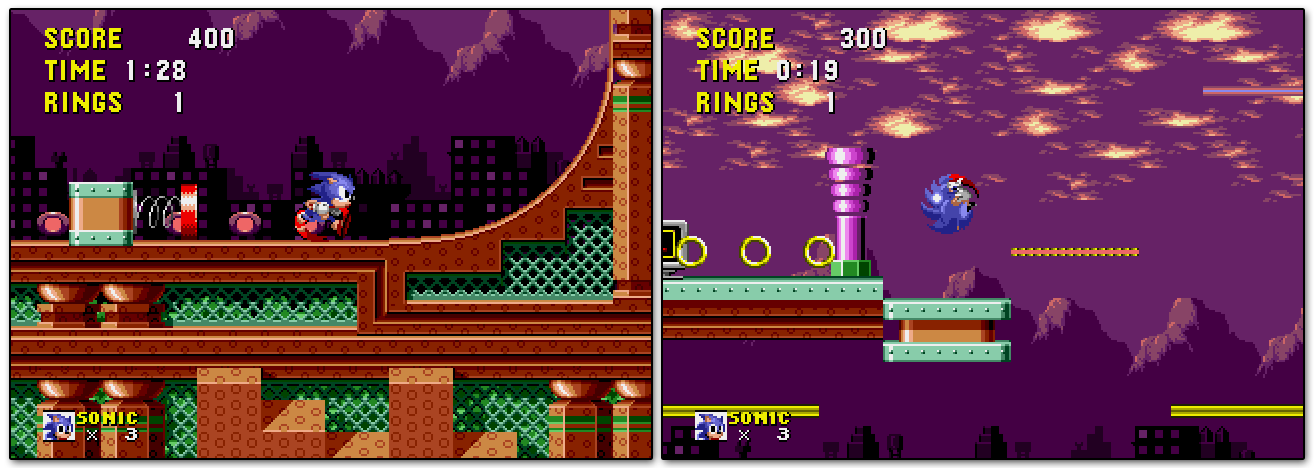


The upcoming Sonic Mania seems to be embracing this speed element, even adding a new move to Sonic’s repertoire: the drop-dash. It might prove fairly useful too — the old Sonic always had a bit of a slow acceleration curve — but I hope the back-to-roots approach also pays homage to the original’s precision traversal, improvisational maneuvering, and optional exploration.
In other words, the slower-paced elements of Sonic.
I’m not sure if pinball was a big influence on the inaugural title (beyond the bumper-themed Spring Yard Zone), but it’s an apt comparison. Sonic’s gameplay mimicked both the thrilling momentum of rocketing around a board’s playfield, and the precise, nail-biting navigation through its clustered obstacles.
In an interview with Game Developer magazine, Hirokazu Yasuhara, the chief level designer for Sonic the Hedgehog, elucidated on his design philosophy. What struck me in particular was his description of creating smaller-scale challenges:
…A more short-distance goal, meanwhile, would be if you’re in a baseball game; your goal is to get on base, and there are any number of simple, linear ways to achieve that goal. An example of a middle-distance goal would be if you run into a bridge in the forest that you can’t gain access to — something I do a lot in games. Maybe you have to do a sequence of jumps to reach it, but it’s visible, at least…
These sorts of short and medium distance goals are a constant source of interruptions to the player, but they also create gameplay variety and change up the overall pace. The original Sonic the Hedgehog is largely remembered for its speed and attitude, but it also contained numerous elements designed to slow down the player and create these mini-challenges.
1. Teases & Secrets
As the quote above alludes to, one of the best ways to make the player stop and consider their surroundings is to tease them with things just outside of their reach. Sonic’s levels are quite big and their intertwining paths linked by speed-ramps, automatically moving platforms, vertical springs, and all sorts of other gadgets that facilitate traversal. Changing “lanes” in Sonic is fairly common, whether on purpose or just by going with the flow, and this teaches players that there are extras to collect if they don’t just run directly to the end of the level.

Some of these extras are also fairly tricky to reach, especially the ones that require exploratory platforming or moving through hidden paths.
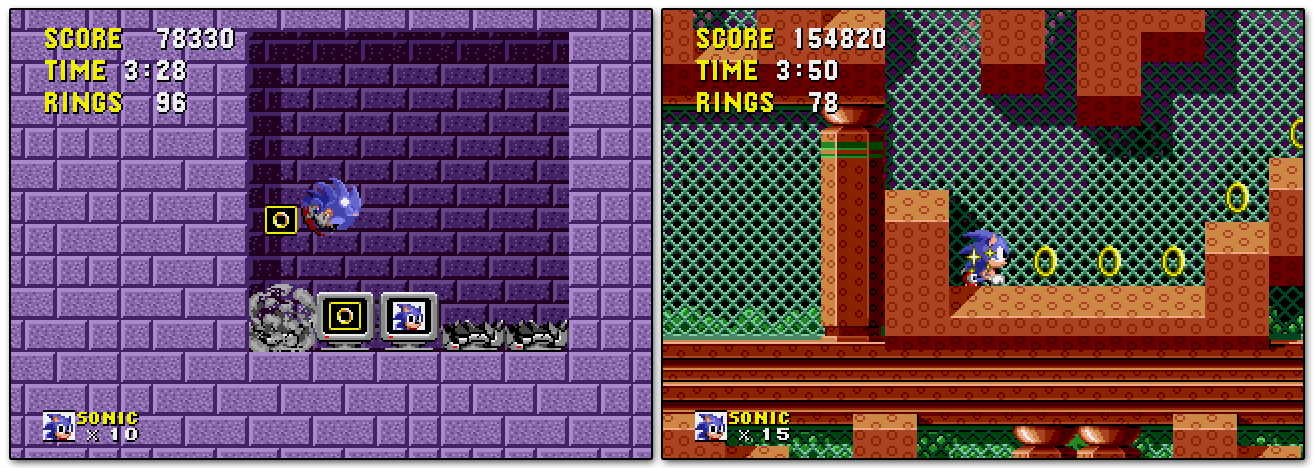
The incentive for extra collectibles is fairly consistent throughout the game. The more rings the player possesses, the easier it is to absorb a hit, and extra shields and temporary invincibility powerups provide further protection. Collecting enough rings also grants extra lives, and a chance to enter the special stage.
2. Special Stages
In these minigames, Sonic is always in his ball mode and the stage slowly rotates around him. It’s a constant fight against the tide as Sonic’s mobility is severely diminished, and getting to the Chaos Emerald involves patiently navigating to its cage.
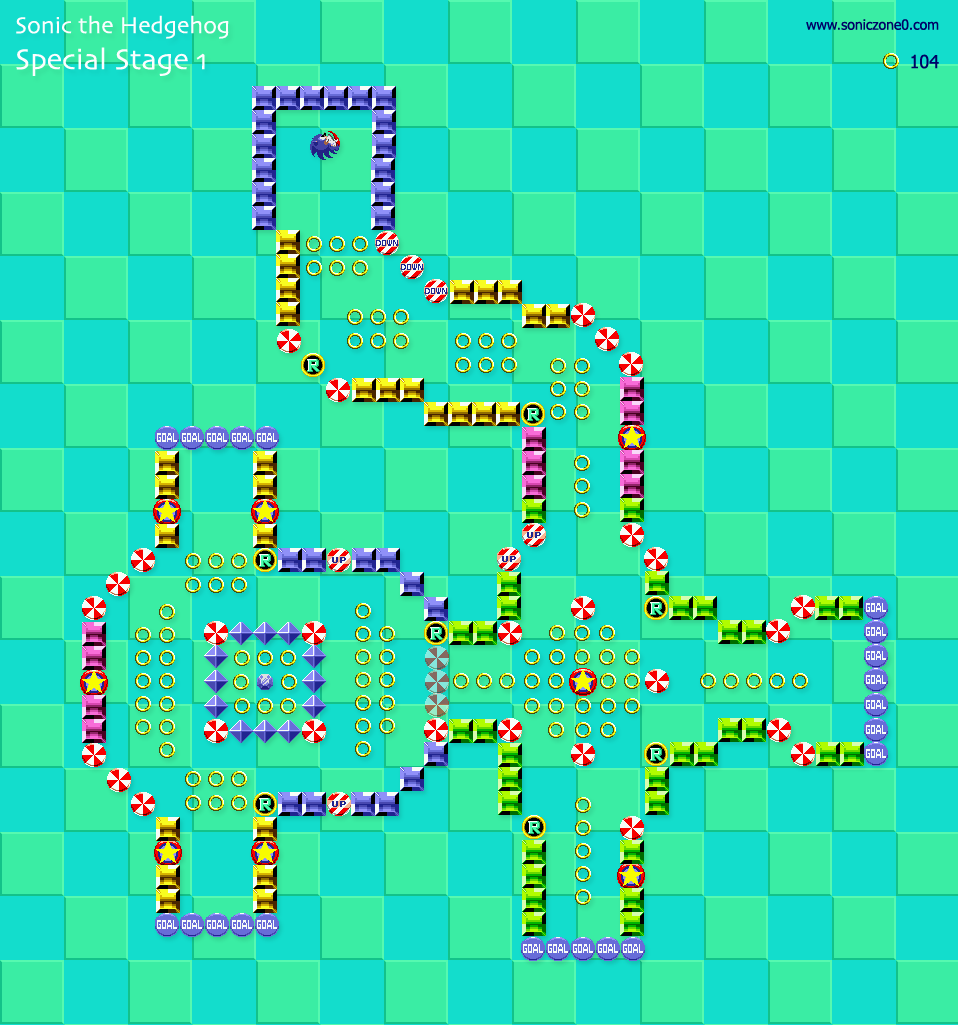
Once discovered, Sonic must press against the individual diamonds that surround the Emerald in order to gradually change their colours. In Breakout fashion, once the all the colours are cycled down, the diamonds disappear and open a path to the prize inside. Obtaining all the Chaos Emeralds actually alters the game’s ending, so there’s a concrete incentive for collecting them throughout the game.

3. Unique Enemies
Most of the enemies in the game die after a single jump/spin attack, and the collision never slows Sonic down. However, a few of them contain unique properties seemingly designed to make the player pause, or even backtrack to a safer spot.


4. Timed Hazards
Unlike enemies, hazards can never be defeated and their timing isn’t always synced up with a straightforward run-through of a level.

Much to the chagrin of speedrunners, parkouring through these obstacles is not always an option. Sonic has a limited moveset, lacking wall-jumps, dashes, gliding, etc., so often the only way to get through unscathed is to simply wait for the right opening.
5. Momentum Modifiers
In addition to obstacles that are dangerous to touch, the game also contains various elements that slow down, stop, or even invert Sonic’s momentum.
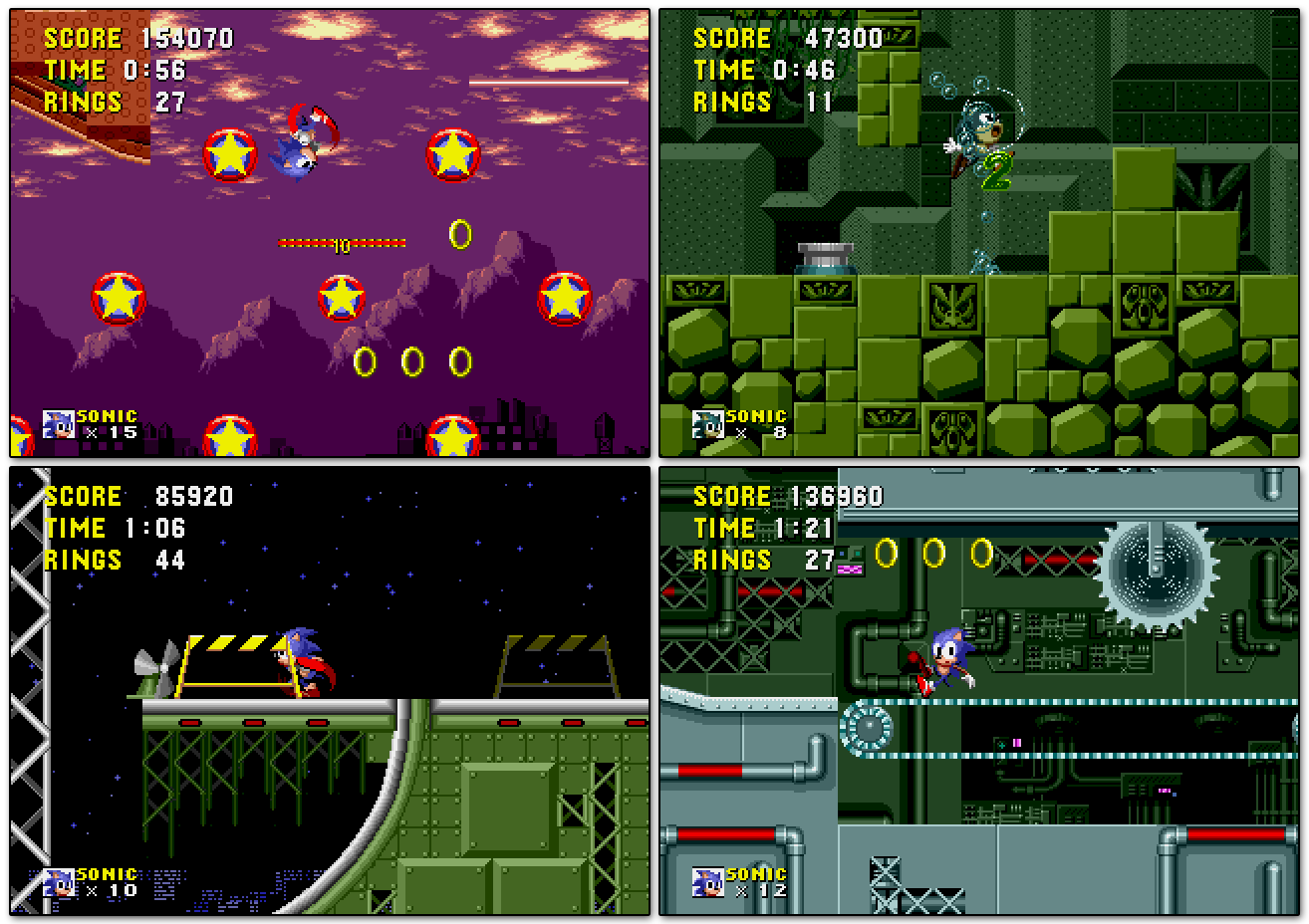
6. Traversal Objects
The most common traversal objects are automatically moving platforms that allow Sonic to get to an area he otherwise wouldn’t be able to reach. These are essentially “always on,” but their scripted nature means that when the player gets to them, the object might be somewhere else, or in an inactive state, requiring a short wait for it to become available. In addition, the actual process of using these objects is usually slower than Sonic’s regular running and jumping speed.

Player-activated objects exist as well, requiring various types of actions to manually initiate.

7. Switches
Not all traversal objects are automatic or activated directly, which is where switches come in. Located on the floors of various zones, these allow Sonic to lower bridges, open doorways, and generally create new traversal paths. Switches rarely affect anything off-screen so they don’t cause much confusion or backtracking, but they do require the player to slow down and execute an extra step before moving on.

8. Movable Blocks
Exclusive to Marble Zone, blocks are unique in that they’re the only objects that can be slowly maneuvered around the map by Sonic. This results in a variety block-based gameplay that’s mandatory to completing the zone.

9. Destructibles
The majority of destructible elements in Sonic the Hedgehog come in the form of crumbling platforms that encourage forward movement rather than slowing it. However, there are a few specific exceptions to this.
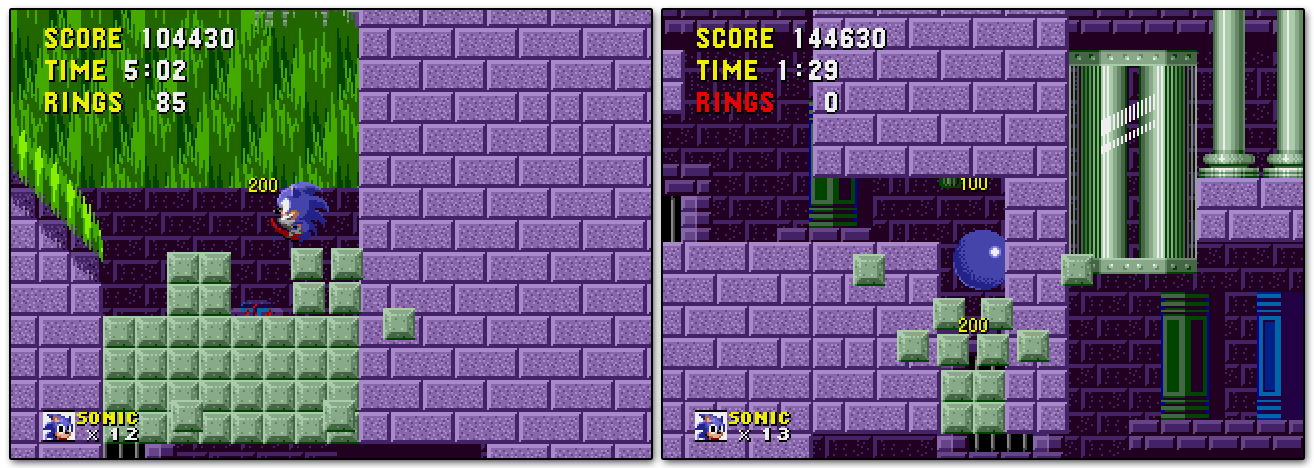
Once again these objects are only found in Marble Zone, and while they slow Sonic down by providing extra individual barriers, busting through them is also a fun mechanic that’s a bit different from the rest of the game.
10. Boss Arenas
Perhaps the most blunt-force way of preventing Sonic from building up speed is limiting his available real estate. All boss encounters — aside from the one in Labyrinth Zone, which is just a race against the tide — do this by forcing the encounter to take place on a single, non-scrolling screen.

Conclusion
While it’s easy to assume that the series evolved past these speed-bumps, the original’s sequels — largely the most beloved Sonic titles — contained them as well. The games were streamlined, providing shorter pauses and more opportunities for building up speed, but they were still filled with crazy gadgets that facilitated movement and exploration, interesting enemies with unique abilities and properties, and lots of secrets that helped the player progress and unlock the ultimate ending(s).

An excessive focus on speed was probably a major reason for the decline of the Sonic-platformer (at least in terms of gameplay), but the issue was also a bit more nuanced. The problem wasn’t just how much of a backseat other gameplay took to speed, but also how the speed elements themselves were implemented.

In recent Sonic games building velocity was no longer an organic part of a level, but rather its main feature. Maps turned into one-way obstacle courses, lacking in interesting challenges while forcibly rocketing Sonic ahead. The thrill of the speed became routine, and it turned the experience into a somewhat passive and boring rollercoaster ride. While that sort of design methodology can work in some genres — it certainly did with the the lane-runner Sonic Dash — it just doesn’t make for very good platformers, 2D or 3D.

The rollercoaster is perfect comparison as the latest games become just that, and everyone knows that after a day at the theme park the rides start to lose their thrill.
The level design started going downhill with Sonic CD. Too many open spaces but never enough to freely go back and forth in time.